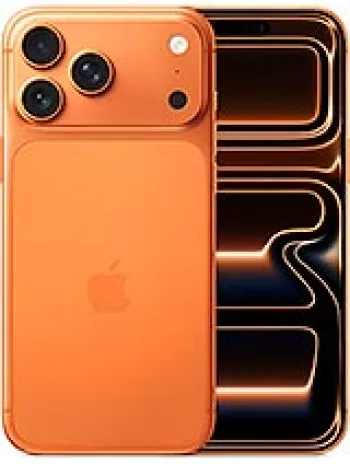
Overview of the Apple iPad Wi-Fi + 3G
Released in 2010, the Apple iPad Wi-Fi + 3G was Apple's first foray into creating a tablet that combined wireless capabilities and mobile data network access. This tablet was a game-changer, offering a sleek design and a user-friendly interface that set the standard for future tablet devices.
Design & Build
The iPad Wi-Fi + 3G measures 242.8 x 189.7 x 13.4 mm, and it weighs about 730 grams, which makes it robust but slightly heavy by today's standards. The body is made with an aluminum back, giving it a premium feel and solid durability. It uses a Micro-SIM for its cellular capabilities, capturing a significant market by giving users the flexibility to access wireless networks on the go.
Display
The device features a 9.7-inch IPS LCD screen with a resolution of 768 x 1024 pixels. The screen has a 4:3 aspect ratio with (~132 ppi density), making it suitable for reading and multimedia consumption. The display is protected by scratch-resistant glass and oleophobic coating, enhancing its durability against daily wear and fingerprints.
Network Capabilities
As the name suggests, the iPad Wi-Fi + 3G supports both Wi-Fi and 3G network technologies. It supports GSM/HSPA technology, with 2G bands covering GSM 850/900/1800/1900 and 3G bands covering HSDPA 850/1900/2100 spectrums. The device supports HSPA data speed, offering users reasonably fast mobile data connectivity for its time.
Operating System & Performance
Originally launched with iOS 4, the Apple iPad Wi-Fi + 3G is upgradable to iOS 5.1.1, giving users access to more apps and features at that time. The tablet is powered by the Apple A4 chipset and uses a 1.0 GHz Cortex-A8 CPU, with a PowerVR SGX535 GPU for handling graphics. While the hardware might seem dated today, at the time of release, this provided a smooth and responsive experience, especially when navigating through the iOS interface.
Memory Options
The iPad Wi-Fi + 3G offers internal storage options of 16GB, 32GB, and 64GB. However, it does not have a card slot for expandable storage. The device includes 256MB RAM, which was sufficient for running the iOS smoothly but is limited by contemporary standards where more memory is beneficial for multitasking and running more demanding applications.
Sound & Multimedia
Equipped with a loudspeaker and a 3.5mm headphone jack, the iPad Wi-Fi + 3G provides decent audio experiences for media consumption. Whether users are listening to music, watching videos, or using apps, the sound quality is clear and serviceable.
Connectivity
The connectivity options include Wi-Fi 802.11 a/b/g/n dual-band and Bluetooth 2.1 with A2DP and EDR for wireless connections. The device also features GPS and A-GPS for navigation, although it lacks radio. The tablet uses a USB 2.0 connection for charging and data transfer, reflecting its technology period.
Battery Life
Powering the iPad Wi-Fi + 3G is a non-removable Li-Po 6600 mAh battery (24.8 Wh). This provides impressive endurance, making it suitable for a full day of normal use activities such as web browsing, media playback, and app usage without recharging.
Sensors & Features
Among its features, the iPad includes an accelerometer and a compass, which help provide a smoother experience for apps requiring motion sensing or navigational capabilities. The primary browser is Safari, supporting HTML, which was optimized for the best possible browsing experience on the iPad’s screen.
Market Impact & Legacy
The iPad Wi-Fi + 3G marked a significant milestone in the consumer electronics market. It was more than just an oversized smartphone; it carved out a space between laptops and smartphones, giving rise to a new category of consumer devices—tablets. Its success paved the way for subsequent iterations of iPads and inspired countless competing tablet devices, permanently influencing how media is consumed and how laptops and desktops are viewed in the modern digital workspace.
Conclusion
Although the device has since been discontinued, the Apple iPad Wi-Fi + 3G's influence is still felt in the world of personal computing. Its focus on design, functionality, and user experience continues to resonate with users, making it a classic example of Apple's ability to disrupt and redefine technology sectors.
Key Features of Apple iPad Wi-Fi + 3G
- 3G Connectivity: Supports GSM and HSPA for 3G network access.
- Display: 9.7-inch IPS LCD with scratch-resistant glass and oleophobic coating.
- Operating System: Initially loaded with iOS 4, upgradable to iOS 5.1.1.
- Processor: Powered by a 1.0 GHz Cortex-A8 CPU with Apple A4 chipset.
- Memory Options: Available with 16GB, 32GB, or 64GB internal storage.
- Sound: Built-in loudspeaker and a 3.5mm headphone jack.
- Connectivity: Wi-Fi 802.11 a/b/g/n, Bluetooth 2.1 with A2DP and EDR, GPS with A-GPS.
- Sensors: Includes accelerometer and compass.
- Battery: Non-removable Li-Po 6600 mAh battery for extended use.
Disadvantages of Apple iPad Wi-Fi + 3G
- Lack of camera features: The device does not include any camera, which limits its use for photography and video calling.
- No expandable storage: The device lacks a card slot for memory expansion, which can be restrictive given the internal storage options.
- Outdated operating system: Initially shipped with iOS 4 and only upgradable to iOS 5.1.1, which is outdated for modern applications and security standards.
- Heavy and bulky design: Weighing 730 g, the tablet is relatively heavy compared to more modern tablets, which may hinder portability.
- Discontinued support: The product has been discontinued and may not receive further software updates or support from Apple.
- Limited CPU and RAM: Features a 1.0 GHz Cortex-A8 CPU and only 256MB RAM, which might not handle current applications efficiently.
- No radio feature: The device lacks a built-in radio, which might be a drawback for users who prefer listening to traditional radio.
- Lacks modern connectivity options: The device is limited to older Bluetooth 2.1 standards and USB 2.0, which are slower compared to more recent versions.


View Also
More Phones
All Rights Reserved +14267 Phones © Mobilawy 2025

























